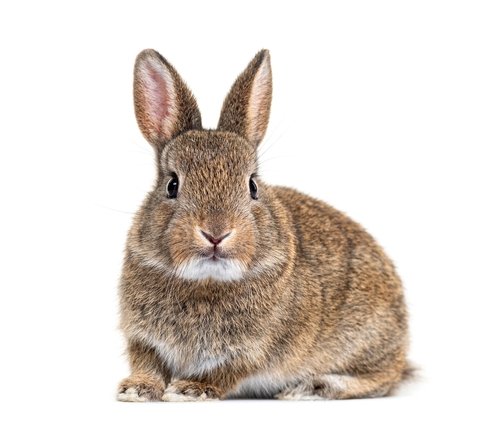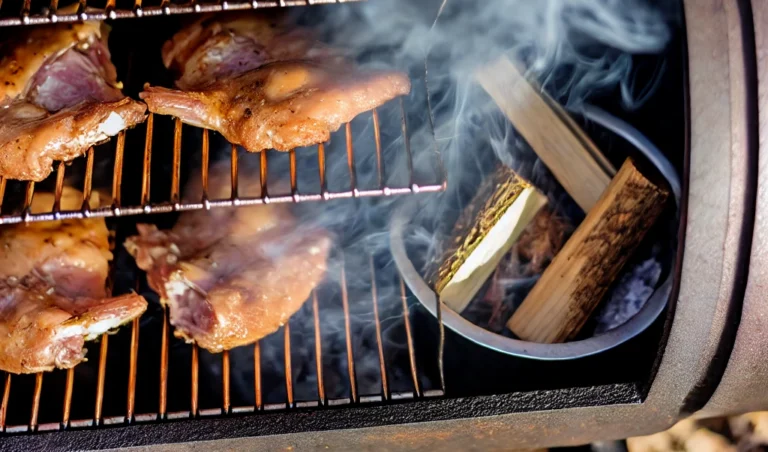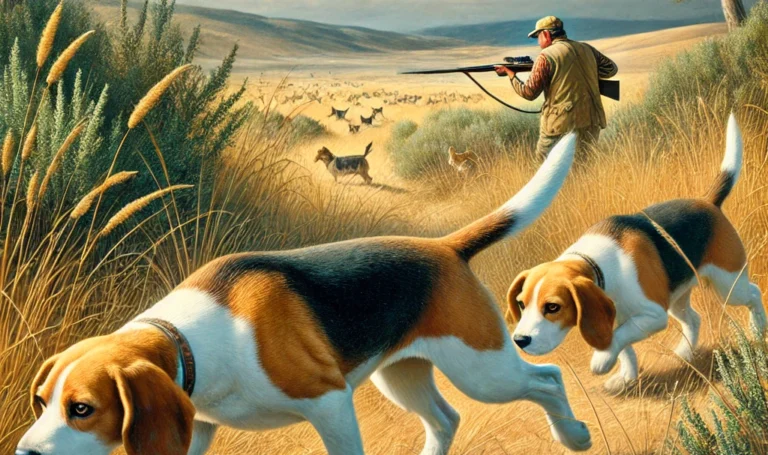5 Powerful Rabbit Hunting Tips for Beginners
Rabbit hunting, my friends, is an age-old pursuit that has captivated the hearts and minds of outdoor enthusiasts for generations. Humans possess a primal instinct that drives us to connect with nature and challenge ourselves in the wild. In this blog, we will review our rabbit hunting tips for beginners.
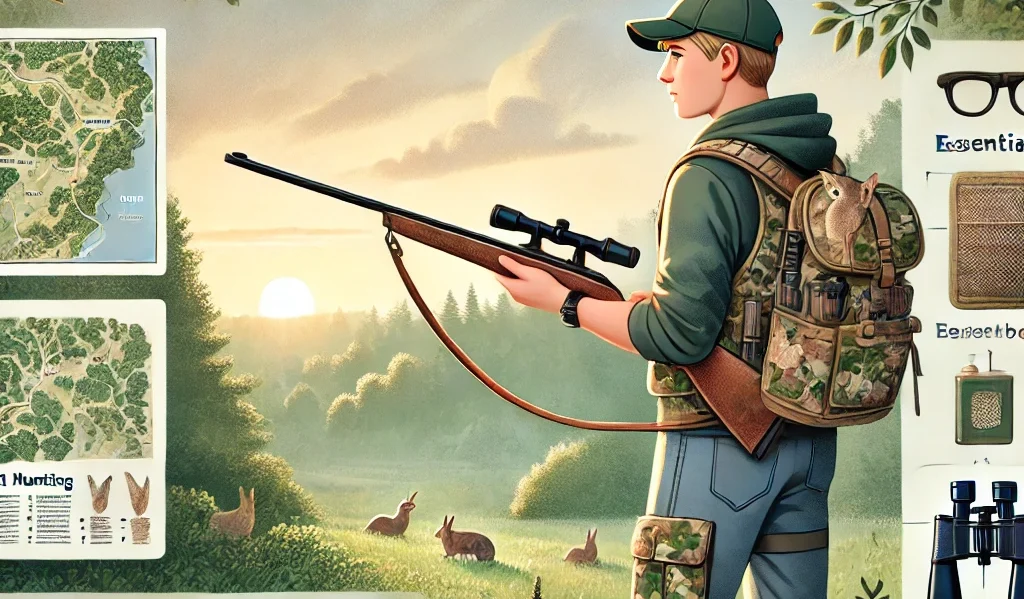
Rabbit hunting offers just that – an opportunity to immerse oneself in the great outdoors while partaking in an exhilarating chase. Beyond mere recreation, rabbit hunting provides a unique set of benefits.
Firstly, it fosters a deep appreciation for wildlife and conservation efforts. By directly engaging with these small game creatures, beginners can develop empathy and understanding for their natural habitats.
Moreover, rabbit hunting cultivates skills such as marksmanship, fieldcraft, and patience. These skills not only enhance one’s self-reliance but also lay the foundation for more advanced forms of hunting.
Basic Understanding of Rabbit Behavior and Habitat
Now that we’ve established why rabbit hunting is such a captivating recreational activity, let us delve into our furry quarry’s psyche. Rabbits are creatures driven by their instincts – constantly on guard against predators while striving to meet their basic needs: food, water, and shelter.
Regarding habitat preferences, rabbits are particularly fond of areas with ample cover, such as dense brushy areas or overgrown fields where they can hide from threats. They are not too picky about terrain types either; you may stumble upon them in grasslands or edge habitats where two different environments converge.
Understanding their behavior is equally important when seeking out these elusive creatures. Rabbits tend to be more active during dawn and dusk hours when visibility is lower for them and predators alike.
During daylight hours, they prefer resting or nibbling on delectable greens, emerging only when they feel safe. This knowledge will serve you well when planning your hunting excursions.
In our next installment, we shall discuss the essential gear one should consider while embarking on their rabbit hunting journey. So strap on your boots, my friends, and gear up for an adventure filled with how to find rabbits for beginners, how to stalk rabbits for beginners, and how to shoot rabbits accurately for beginners – a true rabbit hunt!
Essential Gear for Rabbit Hunting
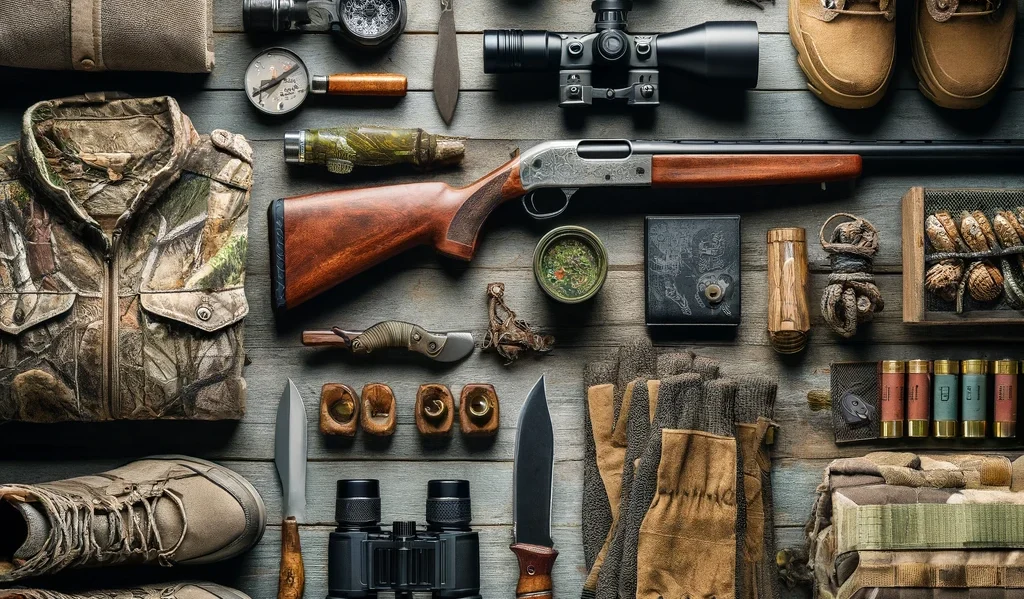
Firearms: Shotguns vs. Rifles for Different Hunting Scenarios
The debate between shotguns and rifles has been ongoing when choosing a firearm for rabbit hunting. Both options have merits, but it is crucial to understand their suitability for different hunting scenarios. Shotguns are the go-to choice for most rabbit hunters. Their wide pellet spread makes them ideal for close-range shooting in dense cover or when hunting rabbits that tend to flush quickly.
A 20-gauge shotgun is generally recommended as it balances power and recoil, making it easier to handle—especially for beginners. However, if you anticipate longer shooting distances or prefer a larger caliber, a 12-gauge shotgun can also be effective.
On the other hand, rifles offer greater accuracy and range compared to shotguns. They excel in open fields where rabbits may be spotted from afar. Bolt-action .22 rifles are popular among hunters due to their manageable recoil and precise aim. These rifles are commonly used when pursuing cottontail rabbits in more open areas with fewer obstructions.
Ultimately, your choice of firearm will depend on the terrain you plan to hunt in and your personal preferences as a beginner rabbit hunter.
Ammunition Selection: Gauge, Shot Size, and Choke Considerations
Selecting appropriate ammunition is essential for successful rabbit hunting. The gauge of your shotgun determines the size of the shells it can accommodate, with 20-gauge being the most common choice among hunters due to its versatility.
Regarding shot size, #6 or #7½ typically works best for rabbit hunting because they balance pellet count and individual pellet energy. These sizes provide enough stopping power without risking excessive meat damage when hit at close range.
Another factor worth considering is choke selection. Chokes determine the spread pattern of pellets, allowing you to adjust your shotgun’s effectiveness at different distances.
A modified or improved cylinder choke is commonly used for rabbit hunting. These chokes provide a wider pattern for close-range shots while maintaining enough density for effective hits.
Clothing and Footwear: Camouflage Patterns and Scent Control
Proper clothing and footwear are essential to increase your chances of success while rabbit hunting. Camouflage patterns that match the surrounding environment help you blend in seamlessly, making it less likely for rabbits to spot you. Opt for patterns that mimic the colors and textures of the area you plan to hunt in—such as earth tones or woodland patterns.
Scent control is equally important for avoiding detection by rabbits. These creatures have an acute sense of smell and can detect human odor from a distance.
Avoid using scented soaps or detergents when washing your hunting clothes to minimize scent. Consider investing in scent-blocking sprays or garments designed specifically to reduce odor.
Choose comfortable yet durable boots for footwear that provide good traction on various terrains. Depending on the region and weather conditions, waterproof boots may be necessary, especially if crossing streams or traversing wet areas.
By selecting the right firearms, ammunition, clothing, and footwear for rabbit hunting as a beginner, you set yourself up for a more enjoyable and successful experience in the field. Remember that practice makes perfect when it comes to handling firearms safely and effectively before embarking on any hunting adventure.
Scouting Techniques for Finding Rabbits

Identifying Suitable Habitats
Knowing where to look is key to rabbit hunting. Rabbits typically inhabit areas with a mix of open fields, brushy cover, and edges between different vegetation types.
Fields are prime rabbit habitats, especially those with tall grasses or crops like clover and alfalfa that provide food and cover. Look for areas where wooded patches meet open fields or meadows, as these transitional zones offer rabbits a variety of resources.
Brushy areas like overgrown fence lines, hedgerows, or thick shrubby clusters are also worth exploring. These dense cover spots shelter rabbits from predators and ample food sources like buds and tender shoots.
Signs of Rabbit Presence
Once you’ve identified suitable habitats for rabbit hunting, you must search for signs indicating their presence. One obvious clue is the presence of fresh tracks in soft soil or mud.
Rabbit tracks have distinct oval-shaped footprints with four toes on both the front and hind feet. Additionally, watch for rabbit droppings scattered along trails or near feeding areas; these droppings resemble small pellets like cocoa puffs.
Feeding areas can be recognized by short-cropped vegetation or nibbled stems around the base of plants like clover or dandelions. Another sign to watch out for is rabbit burrows—small holes usually found in well-drained soil banks or under brush piles/logs near their preferred habitats.
Utilizing Technology
In this day and age, technology can greatly aid beginners in their quest to find rabbits efficiently. Trail cameras are invaluable tools that capture images or videos of animals passing by.
By strategically placing trail cameras near potential rabbit habitats, you can gain valuable insights into their activity patterns, peak feeding times, and preferred travel routes. These images will help you determine the best locations for stand hunting or stalking.
GPS devices are also incredibly useful for scouting rabbit hunting areas. They allow you to mark specific locations where you spot rabbits or find signs of their presence.
This lets you map out your hunting grounds more effectively and plan your approach accordingly. GPS devices can also help prevent getting lost in unfamiliar terrain, ensuring a safe and successful hunt.
By identifying suitable habitats, recognizing signs of rabbit presence, and utilizing modern technology like trail cameras and GPS devices, beginners can significantly improve their chances of finding rabbits during hunting expeditions. Armed with this knowledge, the next step is to develop effective strategies to stalk rabbits or shoot them accurately – topics we’ll cover in subsequent sections of this article.
Note: Always check local regulations and obtain any necessary permits before hunting rabbits. Safety should be a top priority throughout the entire process.
Effective Hunting Strategies
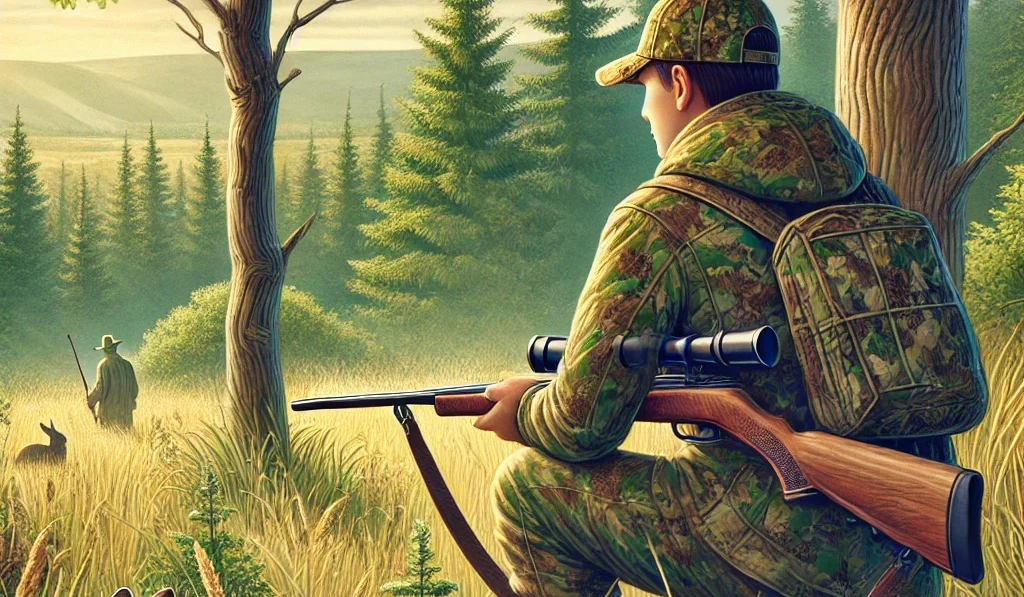
Stalking Technique
When stalking rabbits, beginners should focus on being stealthy and observant. One of the keys to a successful stalk is moving quietly through the terrain. Ensure your footsteps are light, avoiding any noise that could alert the rabbits.
Take soft, deliberate steps, placing your feet carefully to avoid snapping twigs or crunching leaves underfoot. This requires concentration and a keen awareness of your surroundings.
To approach rabbits undetected, it’s crucial to use natural cover effectively. Utilize bushes, trees, or any other vegetation that can provide concealment as you move closer to your target.
Stay low and take advantage of natural obstacles like rocks or fallen logs that can break up your silhouette. By blending with the environment and staying hidden from their sharp eyesight, you increase your chances of getting within shooting range unnoticed.
Wind Direction for Scent Control
Another vital element in the stalking technique is understanding wind direction for scent control. Rabbits have an excellent sense of smell and can quickly detect human scent if it’s carried towards them by the wind.
To avoid alerting them to your presence, always try to move upwind when approaching their habitat. Pay close attention to how the wind blows and adjust your approach accordingly.
If possible, position yourself so the breeze carries away from where you suspect the rabbits might be hiding or feeding. By doing so, you minimize the risk of them catching a whiff of human scent and becoming alerted or spooked.
Stand Hunting Method: Choosing Strategic Positions
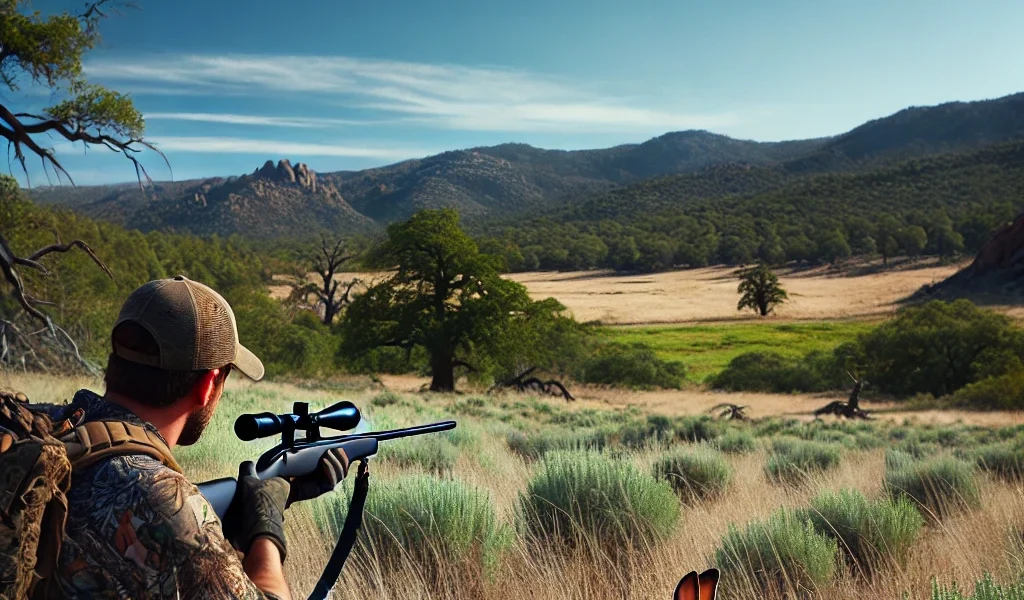
Selecting Your Location
The stand-hunting method involves strategically positioning yourself where rabbits are likely to appear. To maximize your chances of success as a beginner, it’s crucial to identify known rabbit activity areas.
These can be places where you have previously spotted rabbits, discovered signs of their presence (like tracks or droppings), or learned about through local hunting knowledge. Look for habitats that provide rabbits with food and cover, such as fields, brushy areas, or edges between different vegetation types.
Rabbits follow specific patterns when moving through their territory – they have preferred paths and often return to the same locations. By familiarizing yourself with their habits and choosing your stand location accordingly, you increase your chances of encountering them.
Using Natural Blinds or Portable Ground Blinds
Once you have selected a suitable location for stand hunting, it’s essential to create natural blinds or use portable ground blinds for added concealment. A natural blind can be as simple as positioning yourself behind a tree trunk or crouching in dense brush that provides cover while allowing you a clear view of your surroundings.
If you opt to use a portable ground blind, there are various lightweight options available on the market specifically designed for hunting purposes. These blinds can be easily set up and offer excellent concealment while providing sufficient space for you and your equipment.
Regardless of the type of blind used, ensure it blends well with the environment by using local vegetation like branches or leaves to camouflage it further. The idea is to make yourself less noticeable to the rabbits so they feel comfortable coming within range without suspicion.
Patience and Observation Skills
Once in position, patience becomes paramount. Waiting quietly and remaining motionless is necessary for stand-hunting success. Rabbits have keen hearing and will quickly sense any sudden movements – even the slightest twitch could send them darting away in an instant.
While waiting for rabbits to appear within shooting range, hone your observation skills. Keep scanning the surrounding area carefully with your eyes, paying attention to any movement or subtle signs of their presence.
Sometimes, you may notice rabbits before they notice you, allowing you to prepare for a shot. Remember, rabbit hunting requires patience and perseverance.
It’s common to spend long periods waiting for a suitable shot opportunity. Stay focused and take in the nature around you – enjoying the experience of being out in the field is just as important as harvesting your quarry.
By mastering these effective hunting strategies – from stalking techniques to stand hunting methods – beginners can increase their chances of a successful rabbit hunt. Remember, always prioritize safety and adhere to local hunting regulations while enjoying this exciting outdoor pursuit.
Shooting Tips for Rabbit Hunting Success

Shot Placement Techniques on a Moving Target like a Rabbit
When it comes to shooting rabbits, precision is key. As a beginner, it’s crucial to aim for vital organs such as the heart and lungs.
These are relatively large targets and offer a higher chance of an ethical and humane kill. Remember, clean kills are not only more humane but also prevent unnecessary suffering for the animal.
In addition to aiming at the right spot, leading the target is another essential skill you must develop. Rabbits are swift and agile creatures that can quickly change direction or sprint off in an instant.
To compensate for their movements, you’ll need to anticipate their path and aim slightly ahead of them when taking the shot. This technique ensures that your shot connects with the target rather than trailing behind.
While leading your shots is important, it’s also crucial not to attempt excessively long-range shots. Accuracy diminishes significantly with distance, especially for beginners.
It’s recommended to keep your shooting distances within a reasonable range where you can maintain consistent accuracy. This will ensure cleaner kills and reduce the chances of injuring but not retrieving the rabbit.
Handling Harvested Rabbits Safely
Once you’ve successfully harvested a rabbit, it’s essential to handle it safely and responsibly. Field dressing is a fundamental skill that every rabbit hunter should learn.
Start by making an incision along the belly from tail to neck, carefully avoiding puncturing any organs or intestines underneath. Gently remove these organs while being cautious not to rupture them.
After field dressing your rabbits, cool them down quickly by placing them in a cooler or hanging them in a shady spot if weather conditions allow. Keeping the meat cool helps prevent spoilage and preserves its quality until you prepare it for consumption.
Remember always to respect local regulations regarding hunting and ensure proper licensing and tagging of your harvested rabbits. Additionally, it’s important to utilize the meat you harvest responsibly, either by consuming it yourself or sharing it with others who appreciate sustainable, locally sourced food.
Conclusion: Rabbit Hunting Tips for Beginners
As a beginner in rabbit hunting, mastering the art of shooting accurately is crucial for ethical hunting practices and ensuring a successful hunt. By aiming at vital organs with precision and leading your shots based on the rabbit’s distance and speed, you increase your chances of clean kills. Remember to avoid excessive shooting distances that can compromise accuracy.
Handling harvested rabbits safely is equally important. By learning proper field dressing techniques and promptly cooling down the meat, you can ensure its quality for consumption while maintaining respect for the animal you’ve harvested.
Embrace this wonderful opportunity to learn new skills and deepen your connection with nature through rabbit hunting. With practice, patience, and a commitment to responsible hunting practices, beginners can find great joy in this fulfilling pursuit while contributing to conservation efforts in their local environment.

